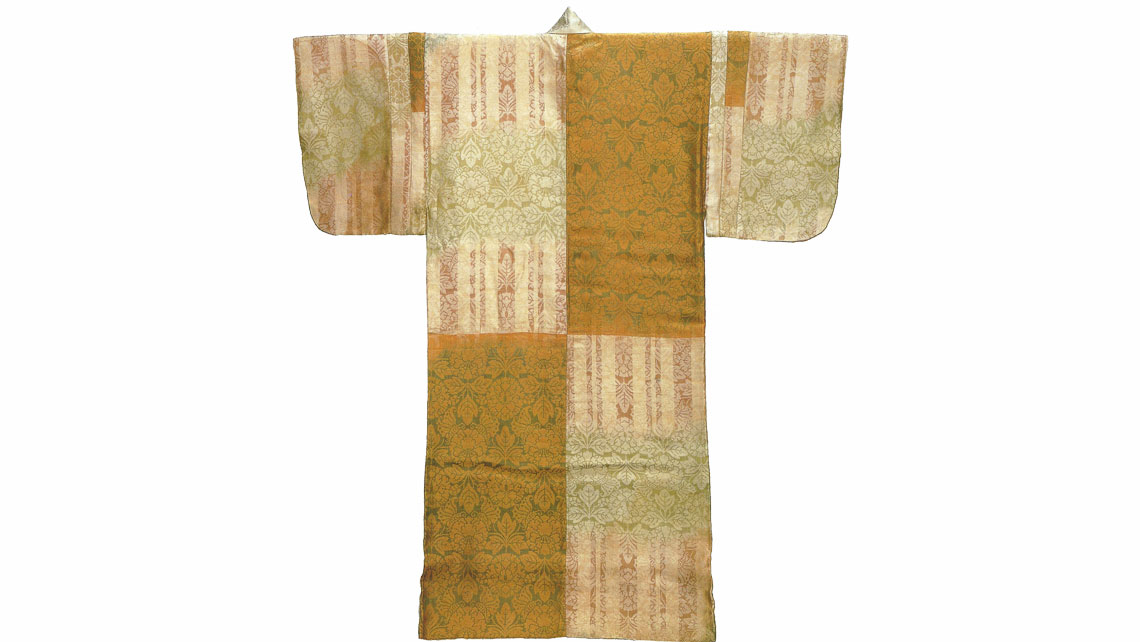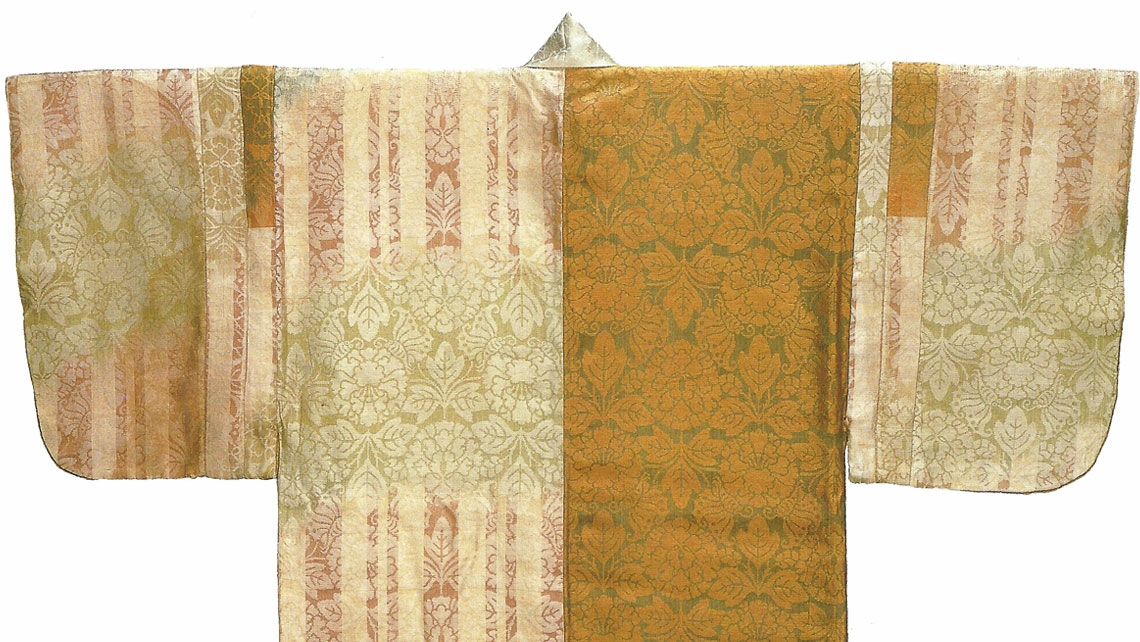Divine Doll for the Ashikari-yama float is based on the Noh play Ashikari.
Dvine doll is in the figure of an old man, clad in a Noh costume with a Japanese fan in its bosom. It holds a sickle and a reed in the right and left hand respectively, and is supposed to be in a reed field. Behind it on the float is a basket covered with scarlet cloth and containing a pine bough. The set, together with the golden crescent hung on the pine, depicts an autumnal dusk. The doll’s former costume (kosode, a type of kimono) is the oldest among all of the kind for Gion Matsuri.
Kosode (Doll Kimono)
The divine doll is clad in a Noh costume, and wears two layers of kosode inside the mizu goromo. The upper-layer kosode is Konji, Kikko-ryu, Ho-o Mon-yo (1957), and the lower layer is Kiji Choji, Karakusa Mon-yo. The community also possesses Shisi, Shokko Mon-yo; Chinju Nishiki (Edo period) and Ayaji Shimekiri, Cho Botan-Mon, Katami Gawari (dated 1589), which is an important cultural property.
Important Cultural Property
Ayaji Shimekiri, Cho Botan-Mon, Katami Gawari 1589.
This kosode was the former costume for the divine doll, and was designated as a National Important Cultural Property in 1970. It is the oldest among other costumes that are inherited in the float communities of Kyoto Gion Matsuri. On the back of the collar, the kosode is dated 1589, and it was granted by Oda Nobunaga, according to an oral tradition in the Ashikari-yama community.
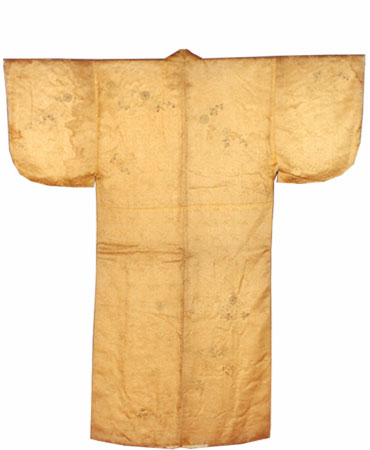
Kiji Choji, Karakusa Mon-yo
Kiji Choji, Karakusa Mon-yo

Konji, Kikko-ryu, Ho-o Mon-yo
Konji, Kikko-ryu, Ho-o Mon-yo
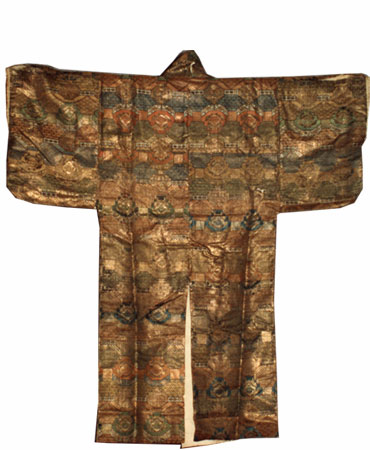
Shisi, Shokko Mon-yo; Chinju Nishiki
Shisi, Shokko Mon-yo; Chinju Nishiki
Doll Head
There are two doll heads. The original doll head is signed by Ko-un, a disciple of Un-kei, a famous sculptor, and dated 1537. The copied doll head was produced in the Edo period. Both the heads were repaired in 2002. Subsequently, the copied head has been used for the procession, while the original head is under permanent preservation, and is only viewable in the house for exhibition on Yoi-yama (Festival Eve).
(Signed in Chinese ink “Produced by Shikibu-kyo Ho-in Ko-un, Shichijo Daibusshi (Sculptor) and Disciple of Un-kei, on June 2, 1537”)
(Signed in Chinese ink “Produced by Shikibu-kyo Ho-in Ko-un, Shichijo Daibusshi (Sculptor) and Disciple of Un-kei, on June 2, 1537”)
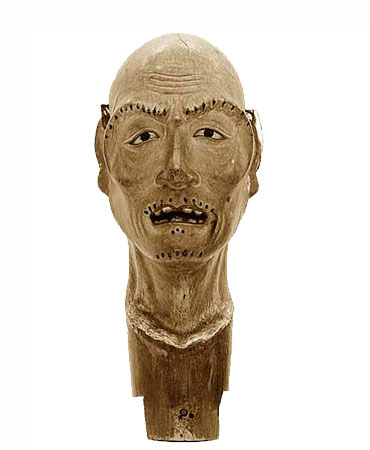
Original head
(made by Ko-un)
Before the repair
Original head (1537)
Before the repair
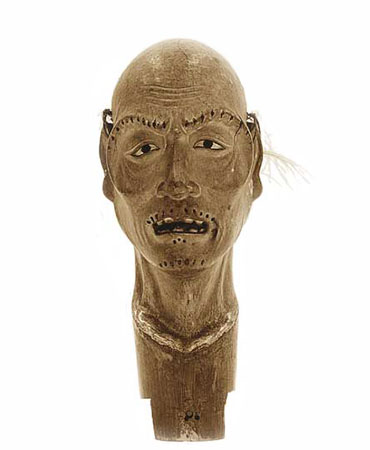
Original head
(made by Ko-un)
After the repair
Original head (1537)
After the repair
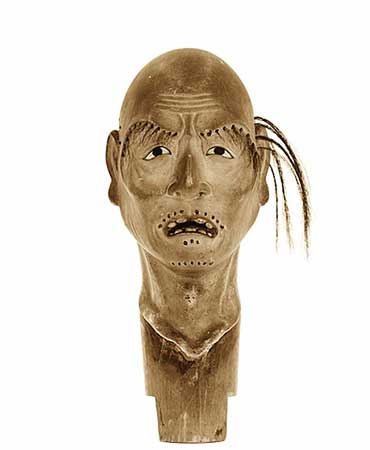
Copied head
Before the repair
Copied head
Before the repair
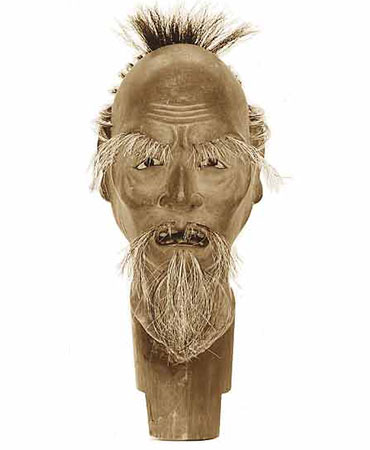
Copied head
After the repair
Copied head
After the repair
Mizu Goromo (Noh Costume) and Hakama (Doll Pants)
The divine doll wears mizu goromo over the kosodes. The present mizugoromo was renewed between 1975 and 1980, from the former one made in 1919. Mizu goromos of similar shades and the same type are also inherited respectively from 1831 and from 1728.
Three types of Oguchi hakama are inherited to date. Two are of similar shades: Konji, Unryu Mon-yo; Ayaji Kinran (presently worn), and Konji, tasuki kikka Mon-yo; Ayaji Kinran. The other Oguchi hakama is Shiroji Tachiwaku, Hana Mon-yo; Ayaji Kinran, which is lined with Indian calico.
Three types of Oguchi hakama are inherited to date. Two are of similar shades: Konji, Unryu Mon-yo; Ayaji Kinran (presently worn), and Konji, tasuki kikka Mon-yo; Ayaji Kinran. The other Oguchi hakama is Shiroji Tachiwaku, Hana Mon-yo; Ayaji Kinran, which is lined with Indian calico.
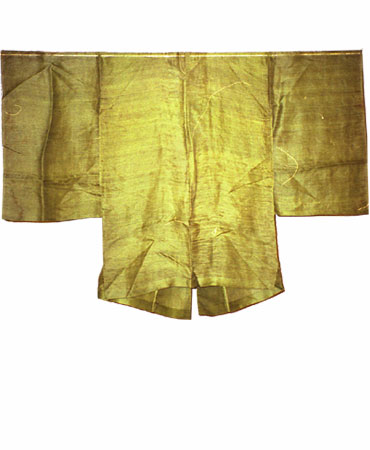
Moegi Sha
Moegi Sha
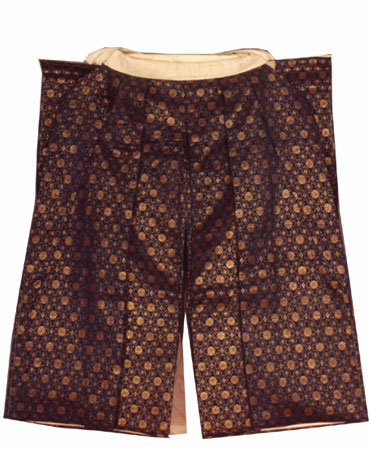
Konji, Unryu Mon-yo; Ayaji Kinran; Oguchi
Konji, Unryu Mon-yo;
Ayaji Kinran; Oguchi
Ayaji Kinran; Oguchi
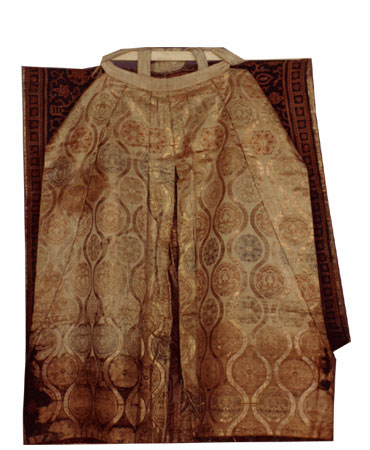
Shiroji Tachiwaku,Hana Mon-yo; Ayaji Kinran Lining: Indian Calico
Shiroji Tachiwaku,Hana Mon-yo; Ayaji Kinran Lining: Indian Calico
OTHERS
Reed -
In his left hand, the divine doll holds an artificial reed made of pure silk, which was renewed in 1970. Artificial reeds made of pure silk are also put above the float platform. Records indicate that natural reeds were used in ancient days, but artificial reeds have been used for many years subsequently, because natural reeds do not last long in the festival season.
Sickle -
In his right hand, the divine doll holds a gold-plated sickle. Its blade part only was renewed in 2005. The crescent above the pine on the float was also renewed at the same time. Records indicate that this crescent was not golden, but silver-colored, in ancient days.
Chukei (Japanese Fan) -
Chukei is a type of Japanese fan the upper part of which is folded in a shape like a ginkgo leaf. “Chukei” literally means “half-open”, referring to its folded shape. This fan is inserted in the bosom of the divine doll.
Obi (Kimono Sash) -
The obis include maedare (apron) and ushiroobi (back sash) “Konji Ryumokko Tomoe Monyo; Sishu” (1986), as well as “Murasaki Karakusa Ho-oh; Kinran” (2008) and “Konji, Unryu Mon-yo; Kinran” (1815).
In his left hand, the divine doll holds an artificial reed made of pure silk, which was renewed in 1970. Artificial reeds made of pure silk are also put above the float platform. Records indicate that natural reeds were used in ancient days, but artificial reeds have been used for many years subsequently, because natural reeds do not last long in the festival season.
Sickle -
In his right hand, the divine doll holds a gold-plated sickle. Its blade part only was renewed in 2005. The crescent above the pine on the float was also renewed at the same time. Records indicate that this crescent was not golden, but silver-colored, in ancient days.
Chukei (Japanese Fan) -
Chukei is a type of Japanese fan the upper part of which is folded in a shape like a ginkgo leaf. “Chukei” literally means “half-open”, referring to its folded shape. This fan is inserted in the bosom of the divine doll.
Obi (Kimono Sash) -
The obis include maedare (apron) and ushiroobi (back sash) “Konji Ryumokko Tomoe Monyo; Sishu” (1986), as well as “Murasaki Karakusa Ho-oh; Kinran” (2008) and “Konji, Unryu Mon-yo; Kinran” (1815).
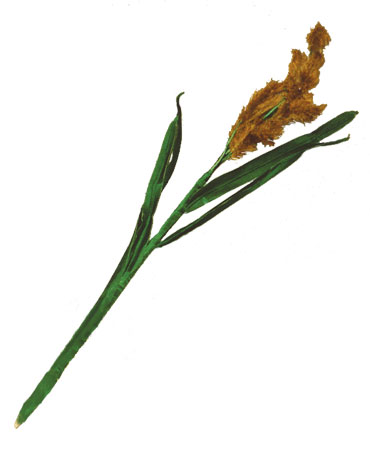
Reed
Reed
1970
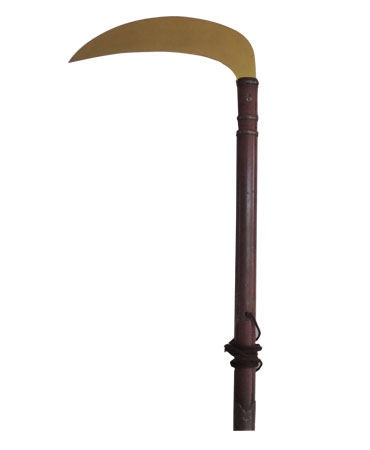
Sickle
Sickle
Repaired in 2005
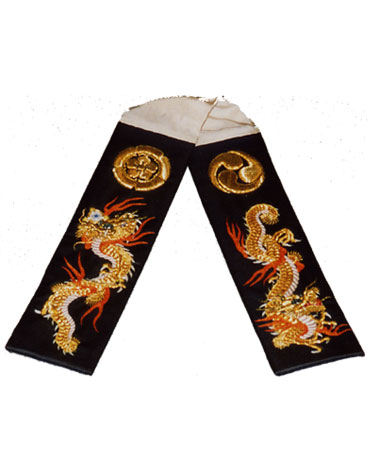
Obi (Kimono Sash)
konji-ryumokou-tomoemon-yousisyu
Obi (Kimono Sash)
1986
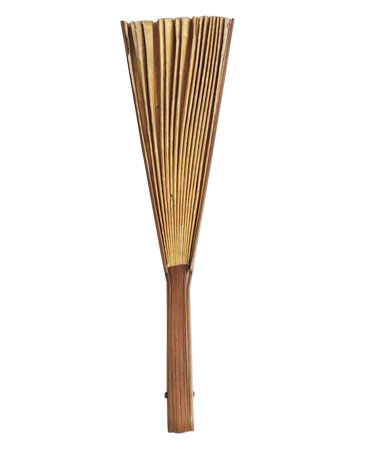
Chukei
(Japanese Fan)
Chukei (Japanese Fan)
